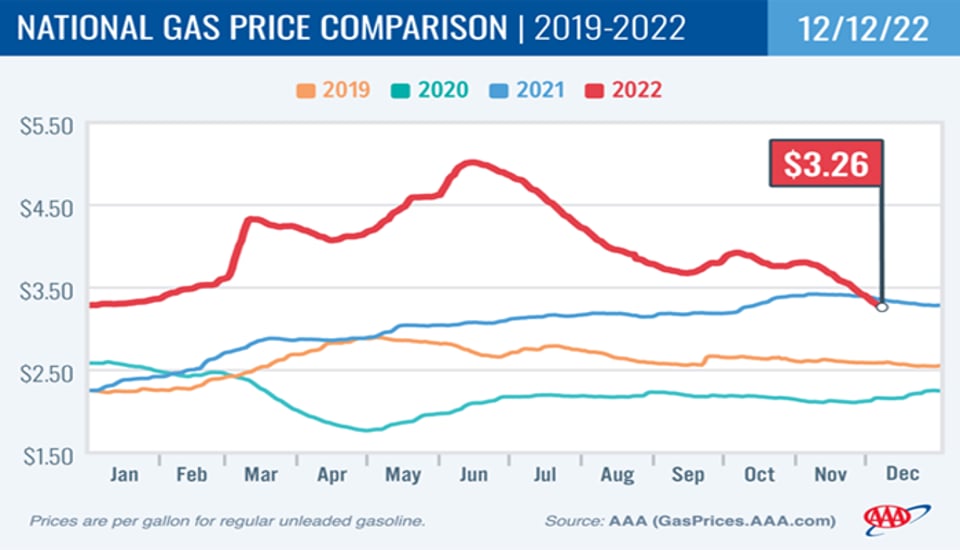Seasonal Demand Changes & Lower Oil Costs Push Down Gas Prices
WASHINGTON, D.C. — Increasing supply and lower demand for gasoline pushed prices at the pump 14 cents lower than last week to $3.26 per gallon.
As of Dec. 12, the national average is 52 cents less than one month ago and 6 cents less than a year ago, according to AAA.
There are now approximately 34 states with averages lower than last year.
"The seasonal pattern of less driving due to shorter days and crummy weather, combined with a lower oil cost, is driving gas prices lower," said Andrew Gross, AAA spokesperson. "If this trend continues, many states could see their average prices fall below $3 a gallon by early next year."
According to data from the Energy Information Administration (EIA), gas demand remained low at 8.36 million barrels per day last week, approximately 605,000 barrels per day lower than a year ago. Meanwhile, total domestic gasoline stocks rose significantly by 5.3 million barrels to 219.1 million barrels.
The nation's top 10 largest weekly decreases occurred in Montana (-26 cents per gallon), California (-25 cents), Alaska (-24 cents), Nevada (-21 cents), Oregon (-21 cents), Washington (-21 cents), Michigan (-21 cents), Arizona (-20 cents), Wyoming (-20 cents) and Indiana (-19 cents).
The nation's top 10 least expensive markets are Texas ($2.69 per gallon), Oklahoma ($2.70), Arkansas ($2.79), Missouri ($2.81), Louisiana ($2.84), Mississippi ($2.84), Tennessee ($2.84), Wisconsin ($2.85), Georgia ($2.87) and Kansas ($2.89).
At the close of the formal trading session on Dec. 9, West Texas Intermediate decreased by 44 cents to settle at $71.02. Crude prices softened last week due to a stronger dollar. Additionally, crude prices were pushed down after the EIA reported that total domestic commercial crude stocks fell by 5.2 million barrels, a lower amount than the market expected.
The domestic commercial crude supply is 19 million barrels lower than the beginning of December 2021. For this week, crude prices could slide if the market continues to worry that global oil demand will stagnate or decline into 2023, especially in China, due to rising COVID-19 infection rates, AAA reported.

